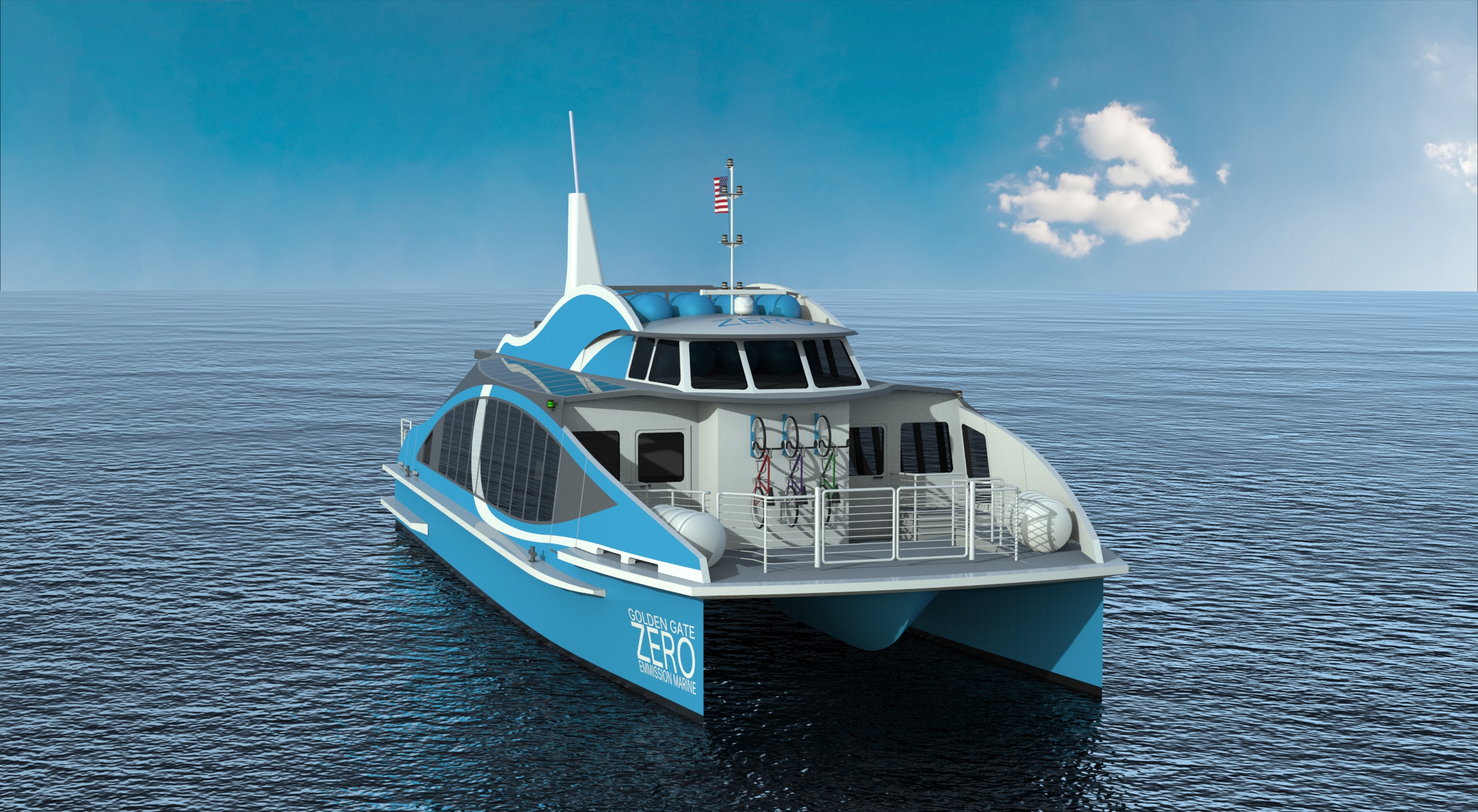As alternative energy sources promising reduced or net-zero carbon emissions increase in popularity, one old technology is enabling SWITCH Maritime LLC’s (SW/TCH) Water-Go-Round project to accomplish something new in the U.S. — the first-ever commercial hydrogen fuel cell, zero-emission e-ferry called Sea Change.
Once built, the 70’ 84-passenger e-ferry will give passengers in the San Francisco Bay Area another way to commute while reducing road congestion and greenhouse gas emissions. Construction of the e-ferry is funded by SWITCH Maritime, an impact investment platform building the first fleet of zero-emission vessels in North America. The Water-Go-Round project also received a $3 million grant for partial funding from the California Air Resources Board.
The project is supported by Zero Emission Industries, a full-service provider of hydrogen fuel cell power systems, as well as partners like BAE Systems, Hexagon Composites, and the Port of San Francisco.
Although using fuel cells in marine propulsion is new, the technology itself has been around for centuries. First invented in 1838 by Sir William Grove, a Welsh physicist, fuel cell technology progressed throughout the 20th century and eventually was incorporated into many different applications. It was used onboard the Apollo 11 mission and can be found in busses and trains today.
A fuel cell is essentially made up of three different component sections: an anode, an electrolyte, and a cathode. There are a variety of different types of fuel cells, utilizing different fuel types, but they all work in the same way.
In the case of the hydrogen fuel cell, a catalyst reacts with hydrogen and produces positively charged ions as well as negatively charged electrons. The electrolyte absorbs the positive ions, while the electrons move through a wire to create an electric charge. After moving through the electrolyte, the positive ion pairs back up with the negative electron in the cathode and react with oxygen to create water as a waste product.
When applied to marine propulsion systems, hydrogen fuel cells provide clean energy with zero greenhouse gas emissions. Vessels powered by hydrogen fuel cell systems will only create water as a waste product and drastically reduces other pollutants that diesel or even hybrid/diesel propulsion systems produce.
Construction of Sea Change started at Bay Ship and Yacht Co. in Alameda, Calif. SWITCH Maritime then awarded All American Marine, Bellingham, Wash., a contract to complete the construction of the vessel’s aluminum frame and outfitting.
The e-ferry will carry an H2 tank array with 264-kg, 250 bar compressed gas, allowing for up to two days of operation before refueling. The powertrain is designed by Zero Emission Industries and powered with a 360-kW fuel cell provided by Cummins Hydrogenics. The vessel will be capable of achieving 22 knots with the boost power produced by 100-kWh batteries located in its hull.
SWITCH Maritime's Water-Go-Round project views Sea Change as a demonstration of hydrogen fuel cell’s capability in marine applications. The company said it hopes to lead the way in implementing this technology across the maritime industry to move towards zero emissions.




